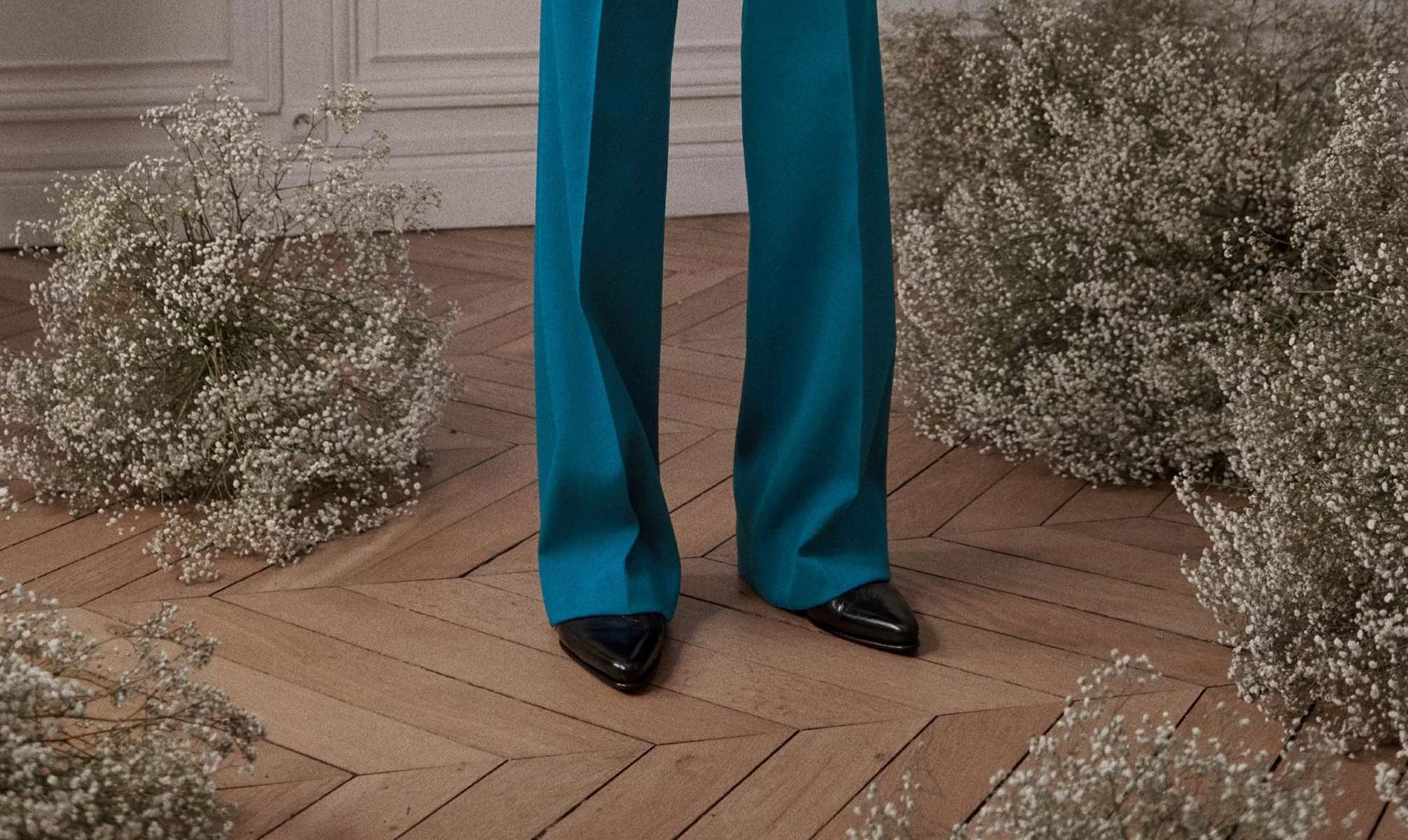Home>Arts and Culture>The Controversial Trend: Cultural Appropriation Or Fashion Statement?


Arts and Culture
The Controversial Trend: Cultural Appropriation Or Fashion Statement?
Published: January 18, 2024
Explore the intersection of arts and culture with the controversial trend of cultural appropriation in fashion. Delve into the debate and its impact on society.
(Many of the links in this article redirect to a specific reviewed product. Your purchase of these products through affiliate links helps to generate commission for Regretless.com, at no extra cost. Learn more)
Table of Contents
Introduction
Cultural appropriation has become a highly debated and contentious topic in the realm of art, fashion, and popular culture. The intersection of diverse cultural elements and mainstream fashion has sparked conversations about the ethical implications of borrowing and repurposing cultural symbols, practices, and artifacts. This phenomenon has raised thought-provoking questions about respect, representation, and the power dynamics at play in the fashion industry.
The concept of cultural appropriation is complex and multifaceted, encompassing a wide range of practices that involve taking elements from a marginalized culture without permission or proper understanding. This often leads to the commodification and exploitation of cultural heritage for commercial gain, stirring up valid concerns about the erasure of the original cultural context and significance.
As the fashion world continues to draw inspiration from global traditions, the line between appreciation and appropriation has become increasingly blurred. While some view this cross-cultural exchange as a celebration of diversity and a means of fostering cultural dialogue, others argue that it perpetuates harmful stereotypes and disrespects the heritage of marginalized communities.
In this article, we will delve into the nuances of cultural appropriation within the fashion industry, exploring real-life examples and the impact of these practices on both the originating cultures and the broader societal landscape. By examining the opposing viewpoints and engaging in a critical analysis of this controversial trend, we aim to shed light on the complexities of cultural exchange and its implications for the evolving landscape of fashion and cultural identity.
What is Cultural Appropriation?
Cultural appropriation refers to the act of adopting or utilizing elements of a culture by individuals or groups that do not belong to that culture, often without proper understanding or respect for its significance. This can encompass a wide range of practices, including the use of traditional clothing, symbols, rituals, music, or art forms from a culture that is not one's own. The key issue at the heart of cultural appropriation is the power dynamic that exists between the appropriating group, typically the dominant culture, and the marginalized or oppressed culture from which elements are being borrowed.
One of the defining characteristics of cultural appropriation is the lack of acknowledgment or recognition of the origins of the borrowed elements. This often results in the erasure of the cultural context and historical significance associated with these elements, reducing them to mere fashion trends or commodities. Moreover, cultural appropriation can perpetuate harmful stereotypes and misconceptions about the originating culture, reinforcing power imbalances and marginalization.
It's important to note that cultural exchange and appreciation differ from appropriation in that they involve a respectful and mutually beneficial interaction between different cultures. In cases of genuine cultural exchange, there is a willingness to learn, understand, and honor the traditions and practices of another culture, often leading to a meaningful exchange of ideas and values. Conversely, cultural appropriation tends to exploit and commodify cultural elements without regard for their original meaning or the impact on the communities from which they are derived.
In the context of fashion, cultural appropriation often manifests through the use of traditional garments, symbols, or motifs in a superficial or exploitative manner, detached from their cultural significance. This raises ethical questions about the responsibilities of fashion designers, brands, and consumers in engaging with diverse cultural influences. The dynamics of power, privilege, and representation play a crucial role in shaping the discourse around cultural appropriation, prompting a critical examination of the impact of fashion on cultural heritage and identity.
Through a deeper understanding of cultural appropriation, we can navigate the complexities of cultural exchange in the fashion industry and work towards fostering a more inclusive and respectful approach to engaging with diverse cultural traditions.
Examples of Cultural Appropriation in Fashion
Cultural appropriation in fashion has been evident in numerous instances, drawing attention to the ethical implications of borrowing and repurposing cultural elements for commercial gain. These examples highlight the complexities and controversies surrounding the intersection of fashion and diverse cultural traditions:
-
Native American Headdresses: One of the most widely recognized examples of cultural appropriation in fashion is the unauthorized use of Native American headdresses. These sacred symbols of honor and respect within indigenous cultures have often been trivialized and commodified in fashion, appearing as mere accessories at music festivals and in mainstream fashion shows. The appropriation of these headdresses not only disregards their spiritual significance but also perpetuates harmful stereotypes about Native American cultures.
-
Traditional Asian Attire: Fashion designers and brands have frequently appropriated traditional Asian attire, such as kimonos, cheongsams, and saris, without proper acknowledgment of their cultural origins. These garments, rich in history and symbolism, have been reimagined and commercialized without respect for their cultural significance. The lack of representation and recognition of Asian communities in the fashion industry further exacerbates the impact of this appropriation.
-
African Tribal Prints: The use of African tribal prints and patterns by non-African designers and brands has sparked debates about cultural appropriation. These distinctive textiles, deeply rooted in the traditions and heritage of diverse African communities, have often been replicated and marketed without benefiting the originating cultures. The commodification of these prints without meaningful engagement with African artisans and designers raises concerns about exploitation and erasure of the original creators' contributions.
-
Bindis and Henna Tattoos: The appropriation of bindis, a traditional forehead decoration in South Asian cultures, and henna tattoos as trendy fashion accessories has been a subject of criticism. These cultural symbols, imbued with spiritual and social significance, have been detached from their cultural contexts and repurposed as fleeting fashion trends, neglecting their cultural meanings and the communities from which they originate.
-
Maori Ta Moko Tattoos: The replication of Maori ta moko tattoos, which are deeply symbolic and culturally significant facial tattoos, by non-Maori individuals has raised concerns about cultural insensitivity and exploitation. The commercialization of these sacred tattoos as fashion statements overlooks their ancestral and spiritual importance within Maori culture, perpetuating a disrespectful portrayal of indigenous traditions.
These examples illustrate the pervasive nature of cultural appropriation in fashion and its impact on the representation and preservation of diverse cultural heritages. The commodification of cultural elements without proper acknowledgment and understanding poses significant challenges to the ethical and inclusive practices within the fashion industry. Recognizing and addressing these instances of appropriation is essential in fostering a more respectful and equitable approach to engaging with diverse cultural influences in fashion.
The Impact of Cultural Appropriation
Cultural appropriation within the fashion industry has far-reaching implications that extend beyond the realm of aesthetics, influencing the representation, preservation, and respect for diverse cultural heritages. The impact of cultural appropriation is multifaceted, encompassing social, economic, and ethical dimensions that shape the dynamics of power, identity, and inclusion.
Erosion of Cultural Significance
One of the primary impacts of cultural appropriation is the erosion of the cultural significance and authenticity of borrowed elements. When traditional symbols, attire, or practices are co-opted by mainstream fashion without regard for their origins, their intrinsic meanings and historical contexts are often diluted or distorted. This process of commodification and detachment from their cultural roots diminishes the depth and richness of these elements, perpetuating a superficial and often inaccurate portrayal of the originating cultures.
Perpetuation of Stereotypes
Cultural appropriation in fashion has been linked to the perpetuation of harmful stereotypes and misconceptions about marginalized communities. When cultural elements are appropriated without proper understanding or respect, they are often stripped of their nuanced meanings and reduced to mere fashion trends or exotic accessories. This can reinforce existing stereotypes and misrepresentations, contributing to a distorted and reductive portrayal of diverse cultural identities.
Economic Exploitation
The commercialization of appropriated cultural elements frequently occurs without meaningful engagement with the originating communities, leading to economic exploitation and marginalization. In many instances, fashion brands and designers profit from the use of cultural symbols and motifs without adequately compensating or acknowledging the artisans, creators, or communities from which they draw inspiration. This perpetuates a cycle of economic disparity and inequity, further exacerbating the power differentials inherent in cultural appropriation.
Impact on Cultural Heritage
Cultural appropriation poses a significant threat to the preservation and integrity of cultural heritage. By divorcing cultural elements from their original contexts and repurposing them for mass consumption, there is a risk of diminishing the visibility and understanding of the authentic traditions and practices they represent. This can contribute to the marginalization and erasure of indigenous and minority cultures, undermining the efforts to safeguard and celebrate their heritage.
Social and Psychological Ramifications
The impact of cultural appropriation extends to the social and psychological realm, affecting the self-perception and identity of individuals from the appropriated cultures. Seeing their cultural symbols and traditions misrepresented or trivialized in mainstream fashion can evoke feelings of disempowerment, alienation, and cultural dissonance. This can perpetuate a sense of exclusion and invisibility, reinforcing the broader patterns of marginalization and inequality.
In essence, the impact of cultural appropriation in fashion reverberates through social, economic, and cultural spheres, shaping the narratives and representations of diverse cultural identities. By recognizing and addressing these impacts, the fashion industry can strive towards fostering a more ethical, inclusive, and respectful approach to engaging with diverse cultural influences.
The Debate: Cultural Appropriation or Fashion Statement?
The intersection of cultural appropriation and fashion has sparked a contentious debate, prompting a critical examination of the ethical and creative dimensions of borrowing and reinterpreting cultural elements within the realm of style. At the heart of this debate lies the question of whether the incorporation of diverse cultural influences into fashion represents a celebration of diversity and a form of artistic expression or perpetuates harmful power dynamics and exploitation.
Proponents of cultural appropriation argue that fashion serves as a platform for cultural exchange and creative exploration, enabling designers and individuals to draw inspiration from diverse traditions and infuse their creations with a rich tapestry of global influences. They contend that the fusion of cultural elements in fashion reflects a celebration of diversity and a means of fostering cross-cultural dialogue, transcending boundaries and enriching the sartorial landscape with vibrant and eclectic expressions of style.
On the other hand, critics of cultural appropriation emphasize the need for responsible and respectful engagement with cultural traditions within the fashion industry. They assert that the commodification and misrepresentation of cultural symbols and practices perpetuate harmful stereotypes, erode the authenticity of cultural heritage, and contribute to the marginalization of the originating communities. Additionally, they highlight the power differentials at play, underscoring the historical and ongoing exploitation of marginalized cultures by dominant fashion institutions.
The debate surrounding cultural appropriation in fashion is inherently complex, intertwining considerations of artistic freedom, social responsibility, and the impact of globalized fashion on cultural identities. It raises thought-provoking questions about the boundaries of creative expression, the ethical responsibilities of designers and brands, and the power dynamics that shape the production and consumption of fashion on a global scale.
Navigating this debate requires a nuanced understanding of the historical, social, and economic contexts in which cultural appropriation occurs, as well as a recognition of the diverse perspectives and experiences that inform the discourse. By engaging in constructive dialogue and critical reflection, the fashion industry can strive to strike a balance between embracing cultural diversity and ensuring that cultural representations are approached with sensitivity, respect, and a commitment to fostering inclusive and equitable practices.
In essence, the debate surrounding cultural appropriation in fashion underscores the complexities of navigating the intersections of culture, creativity, and commerce, calling for a thoughtful and inclusive approach that honors the integrity and diversity of global cultural heritages.
Cultural Appreciation vs. Cultural Appropriation
Cultural appreciation and cultural appropriation represent two distinct approaches to engaging with diverse cultural traditions within the fashion industry. Understanding the nuances that differentiate these concepts is essential in navigating the complexities of cross-cultural exchange and representation.
Cultural appreciation involves a genuine and respectful acknowledgment of the traditions, symbols, and practices of a particular culture. It entails a willingness to understand the historical, social, and spiritual significance of cultural elements and to honor their origins. When approached authentically, cultural appreciation fosters a sense of mutual learning and enrichment, allowing for the celebration and integration of diverse cultural influences in fashion. This approach encourages meaningful engagement with artisans, designers, and communities, promoting collaboration and dialogue that transcends superficial trends and embraces the depth and diversity of global cultural heritage.
In contrast, cultural appropriation occurs when elements from a marginalized or oppressed culture are adopted without proper understanding, respect, or consent, often resulting in the commodification and misrepresentation of cultural symbols for commercial gain. This practice disregards the significance and context of the borrowed elements, perpetuating power imbalances and reinforcing harmful stereotypes. Cultural appropriation is characterized by a lack of recognition of the originating culture and a failure to consider the impact of the borrowed elements on the communities from which they are derived.
Distinguishing between cultural appreciation and cultural appropriation requires a critical examination of the intentions, impact, and dynamics of the interaction between fashion and diverse cultural traditions. It necessitates a conscientious approach that prioritizes ethical considerations, inclusivity, and the amplification of diverse voices and perspectives within the fashion landscape.
By fostering a culture of genuine cultural appreciation, the fashion industry can strive to create a space where diverse cultural influences are honored, celebrated, and integrated with integrity and respect. This approach paves the way for meaningful collaborations, equitable representation, and the cultivation of a more inclusive and authentic sartorial narrative that embraces the richness and plurality of global cultural heritages.
Conclusion
The discourse surrounding cultural appropriation in fashion underscores the intricate interplay between creativity, representation, and ethical responsibility within the industry. As the boundaries of global fashion continue to expand, the complexities of engaging with diverse cultural influences demand a nuanced and conscientious approach. The impact of cultural appropriation extends beyond the aesthetic realm, shaping the narratives of cultural heritage, social equity, and identity representation.
Recognizing the distinction between cultural appreciation and cultural appropriation is pivotal in navigating the ethical dimensions of borrowing and reinterpreting cultural elements. Genuine cultural appreciation fosters a climate of mutual respect, understanding, and collaboration, transcending surface-level trends to celebrate the depth and diversity of global cultural traditions. In contrast, cultural appropriation perpetuates power imbalances and marginalization, eroding the authenticity and significance of borrowed elements while reinforcing harmful stereotypes.
The debate surrounding cultural appropriation in fashion serves as a catalyst for critical reflection and constructive dialogue, prompting the industry to confront the power dynamics, economic disparities, and social implications inherent in cross-cultural exchange. By engaging in meaningful conversations and embracing diverse perspectives, the fashion community can strive to foster an inclusive, respectful, and equitable approach to engaging with cultural heritage.
Moving forward, the fashion industry holds the potential to champion ethical and responsible practices that honor the integrity and diversity of global cultural heritages. Embracing a framework of cultural appreciation, designers, brands, and consumers can collaborate with integrity, amplify underrepresented voices, and cultivate a sartorial narrative that authentically reflects the richness and plurality of global cultural identities.
In essence, the complexities of cultural appropriation in fashion call for a paradigm shift towards a more inclusive, ethical, and culturally sensitive approach. By recognizing the impact of fashion on cultural representation and heritage preservation, the industry can chart a course towards a future where diverse cultural influences are celebrated, respected, and integrated with integrity and authenticity.













